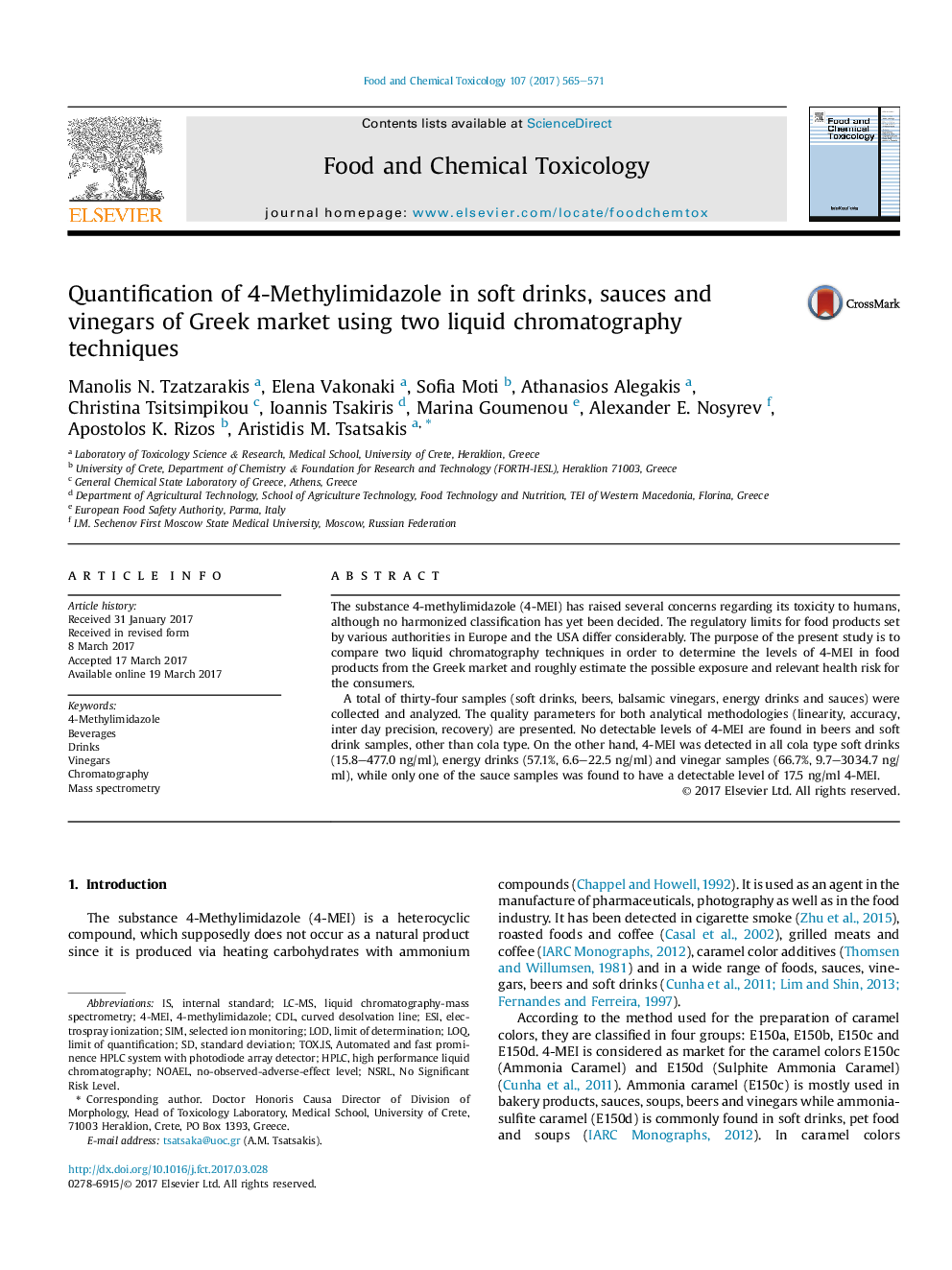| Article ID | Journal | Published Year | Pages | File Type |
|---|---|---|---|---|
| 5559937 | Food and Chemical Toxicology | 2017 | 7 Pages |
â¢Toxis and LCMS methods are validated for the quantitation of 4-MEI in food products.â¢The majority of soft drinks, especially cola-type, showed detectable levels of 4-MEI.â¢Balsamic type vinegars had the higher levels of 4-MEI.â¢4-MEI consumption does not exceed the NOAEL level of 80 mg/kg bw/day set by EFSA.
The substance 4-methylimidazole (4-MEI) has raised several concerns regarding its toxicity to humans, although no harmonized classification has yet been decided. The regulatory limits for food products set by various authorities in Europe and the USA differ considerably. The purpose of the present study is to compare two liquid chromatography techniques in order to determine the levels of 4-MEI in food products from the Greek market and roughly estimate the possible exposure and relevant health risk for the consumers.A total of thirty-four samples (soft drinks, beers, balsamic vinegars, energy drinks and sauces) were collected and analyzed. The quality parameters for both analytical methodologies (linearity, accuracy, inter day precision, recovery) are presented. No detectable levels of 4-MEI are found in beers and soft drink samples, other than cola type. On the other hand, 4-MEI was detected in all cola type soft drinks (15.8-477.0Â ng/ml), energy drinks (57.1%, 6.6-22.5Â ng/ml) and vinegar samples (66.7%, 9.7-3034.7Â ng/ml), while only one of the sauce samples was found to have a detectable level of 17.5Â ng/ml 4-MEI.
Graphical abstractDownload high-res image (134KB)Download full-size image
